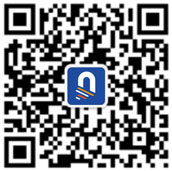Shanghai International Blockchain Week 2019, the largest blockchain gathering in China, was held from September 14 to 18, brought together founders of the mainstream blockchain platforms, technology leaders, experts and scholars, representatives of various industry and founders of promising projects. Themed "Blockchain New Economy: New Decade, New Beginning", the event focuses on the industry’s development in the past ten years and its prospects in the future.
PANews selects speech highlights from speakers and gives you an overview of Shanghai International Blockchain Week.
o1
Lihui Li, Former President of Bank of China
“Digital currency will be at the core of global digital economy competition in the future.”

“Although the application of the blockchain technology is still very limited at present and has not yet formed the scale effect, some emerging structural innovations seem to hold the power of change. First, digital trust that can enhance commercial credit. The main advantage of digital trust is that it makes low-cost credit inclusion possible, which will intern restructure the credit model and change the credit system. Second, digital connection that can penetrate financial intermediaries. Blockchain technology is more and more widely used in finance, but at the same time it may increasingly affect the intermediary position of it. Third, the digital currency that can transcend national sovereignty. Digital trust, digital connection and digital currency, all based on blockchain technology, are most likely to reconstruct economic and financial models. This is a challenge as well as an opportunity for the future.”
o2
Dr. Qian Yao, Deputy Secretary & General Manager of China Securities Depository and Clearing Corporation Limited (CSDC)
“Digital economy has become a key driving force for economic and social development in China.”

“Digital assets and digital currencies are two most important aspects of the digital economy. The development of digital assets can not only effectively expand the application scenarios of digital currency, but also lay a cornerstone for the issuance of digital currencies in the future. Their coordinated development is the basic driving force and important symbol of the development of digital economy.
The traditional regulatory paradigm which pays a lot of attention to licensing, institutional activities and the account opening processes, needs to be re-examined. First, the focus of management should be transformed from institutional license to users’ authority. Second, smart contracts should be reviewed in the process of business approval. Actually, with the help of digital technologies, we can not only put digital assets under control, but also regulate them in more precise manners. Therefore, in some senses, instead of worrying about digital assets getting out of control in the future, we should be more vigilant against over stringent regulations.”
o3
Dr. Feng Xiao, Chairman of Wanxiang Blockchain Inc.
“Blockchain technology and digital currencies are the best solutions to the digital financial system.”

Dr. Feng Xiao, vice chairman & executive director at China Wanxiang Holdings, and chairman & general manager of Wanxiang Blockchain Inc, delivered a speech titled “Thought on Libra”, exploring Libra from the currency perspective, the financial perspective, and the business perspective.
Dr. Xiao suggested that the central bank should allow commercial institutions with reasonable scenarios, number of users, traffic flows and demands to set up accounts in the central bank. These institutions can send 100% reserves to the central bank for conversion of digital assets. Dr. Xiao implied here that digital currencies are not currencies for universal use, but special currencies that must be connected with specific scenarios and usages.
Dr. Xiao believed that the new generation of digital financial system requires the use of blockchain technology. The digital financial system includes digital economies, digital technologies, and digital finance. In this system, blockchain technology and digital currencies are the best solutions.
From a business perspective, new technologies are historically used in two directions: one is as a tool to improve the marginal effects, and the other is as an institution that reconstructs the underlying logic of business.
o4
Vitalik Buterin, Ethereum Founder
“Ethereum 2.0 specification is already done. Great progress has been made in DAOs.”

Ethereum founder Vitalik introduced the latest developments in the Ethereum ecosystem. He further said: "Ethereum 2.0 will be launched in a few months. Seven teams gathered in Toronto to support its development. Ethereum 2.0 specifications have already been done. We are currently undergoing a third-party audit and already received some feedback.
In the past year, the DAOs in Ethereum have made great progress. These DAOs have been used for governance, charity, sponsorship and other aspects. Regarding the development of DAOs, he also mentioned the vision of using smart contracts to optimize financing methods. DAICO can protect the rights and interests of users and reduce the losses caused by scam projects.
Vitalik mentioned about things we could look forward to, which include a better and more trustworthy oracles, allowing applications that interact with real world; PoS and sharding on Ethereum; more use of smart wallets, smart contracts for fundraising, etc; existing exchanges using zero-knowledge proof to improve safety; and decentralized applications that work even better than centralized alternatives.
o5
PwC Global Blockchain Report:
“Blockchain M&A deals and fundraising are active, but still in a small scale.”

Lucy Gazmararian, PwC FinTech advisory for Asia, released PwC Global Crypto M&A and Fundraising Report. The report analyzed M&A and fundraising activities in different regions, types and scales. America still dominates crypto M&A and fundraising deals. Though crypto fundraising ticket sizes have increased by 50% in H1 2019 compared to H1 2018, the overall size is still small.
The report shows three trends for second half of 2019. First, blockchain M&A deals will increase. Second, blockchain fundraising will increase. Third, market players will continue to expand.
o6
Henry Ma, Vice President and Chief Information Officer of WeBank
“Blockchain technology has the potential to promote the development of social governance.”

Henry Ma believed that blockchain technology has been controversial from the very beginning. There have been many commercial applications in the past few years, but “the economy of scale has not yet been achieved”. Will the applications of the blockchain technology be limited to virtual currencies represented by Bitcoin? It may not be true. He believed that social governance could be a field where the blockchain technology can have great potential. In addition, he introduced a low-carbon transportation scenario under the framework of WeBank’s MERITS program, where a public consortium blockchain is built using the blockchain technology to establish an ecosystem of low carbon lifestyles education.
o7
Lilin Sun, founder of PlatON

Sun believed that privacy computing is entering a golden age where smart terminals and internet of things will do all the verifications. Inter-terminal payments, settlement and transfer of assets are all made possible through the transformation of the account system. From the initial black iron era to the gateway era, then to the era of virtual accounts like Alipay, the payment path will eventually enter the golden age of intelligent terminals.
o8
Patrick Dai, Co-founder of Qtum
“The infrastructure needs urgent upgrades. We should jump out of the framework.”

Patrick rethinked distributed applications. He believed the idea of global verification of bitcoin is still in use, which imposes huge constraints on development. He added the infrastructure needs huge upgrades and more iterations and we need to jump out of the old framework.
Patrick believed pure hype is a tool for financial speculation. It is feasible in some sense before regulations are in place. Because it is an early stage of unregulated growth. With more mature and clearer regulations, as the underlying clearing and settlement infrastructure for micro-service, the blockchain will naturally provide the clearing and settlement tools.
o9
Dr. Gavin Wood, Founder of Polkadot
“We create systems without the need of trust.”

Dr. Gavin Wood believed that crypto economics can help us create, validate, and prove the principles of the world. It could reduce the need of trust or make a zero-trust world, so that we no longer need to trust others. It's not that we have created a trusted system. Instead, we have created a system that works without trust. We should not establish a credible institution or entity. What we care about is to separate trust from this formula. No system is 100% trustless or 100% trusted. Most systems we trust are in a continuum.
10
Sunny Lu, Co-founder and CEO of Vechain
“It could be more difficult to reach business consensus than a technical one.”

How to better play the role as an enabler of blockchain technology? Yang Lu, co-founder and CEO of Vechain, believed only with professional teams and enterprise level applications can we promote the development of blockchain technology, and it’s more about business consensus. There should be a reasonable incentive mechanism in place to bring various enterprises together.
It could be more difficult to reach business consensus than a technical one, and to achieve this goal, enterprises need to be more open-minded and make their platforms open-sourced to attract more players and participants. In addition, the industry also calls for a governance consensus, governments and regulators need to play their roles. A compliant, fair and cooperative environment is essential to enabling blockchain to go mainstream.
11
VC’s Vision for the Future Investment Trend:
“Regulation and business logic are the two major factors affecting investment.”

Remington Ong, Partner at Fenbushi Capital, Duane Kuang, founding managing partner at Qiming Venture Partners, Patrick Chang, director at Samsung NEXT Ventures, Min-Q Kim, executive director at Korea Investment Partners, and Nick Grossman, partner at Union Square Ventures, discussed about future investment trend for blockchain.
Min-Q Kim, executive director at Korea Investment Partners, believed that regulation is the biggest constraint on the challenges of traditional investors and investment institutions entering the blockchain sector. However, Duane Kuang, founding managing partner at Qiming Ventures, which focuses on blockchain investment in China, believed that regulation is no doubt an important factor, but the more important issue is about the business logic of blockchain technology.
The blockchain technology is not only revolutionizing the world but also transforming the role of VCs. Nick Grossman, partner at Union Square Ventures, said the blockchain industry will change the investment methods and strategies of traditional institutions. Now VCs need to endorse a crypto currency when they make investments. That’s something they have never done before. Another new change is investors now need to be involved and become long-term partners to ensure the liquidity of digital assets.
12
SVP of DNV GL Renato Grottola
“The enemy of the massive applications of blockchain tech is not a regulation, but a lack of supervision.”

Renato Grottola believed blockchain is not a tool for proof of concept. We need to use the blockchain to really make an impact, rather than using it as an eye-catching marketing tool.
He mentioned that when trading comes to physical objects, the blockchain technology itself is not enough. Therefore, DNV GL studies digital certification in depth. Digital certification integrates the blockchain with other activities, which are human-based or digital-based, providing all the necessary elements to ensure physical assets or the transaction of the process are reliable.
13
Antonio Senatore, Global CTO of Deloitte Blockchain
Global CTO of Deloitte Blockchain, the first company to audit crypto assets, explained blockchain strategy in detail.

Antonio Senatore, Global CTO of Deloitte Blockchain, said the blockchain is not just about decentralized governance but an ecosystem. He believed that blockchain should be regarded as a platform in the future. Blockchain is not independent, but combined with other technologies. It is an ecosystem. We can see that early successful projects in the industry all make contribution to the ecology. Deloitte offers multi-platform, cross-industry and asset-based blockchain strategies.
Where should blockchain start from? Not all companies need blockchain technology. In some cases, blockchain do subvert the company's original position, so for each company, much thought is needed prior to its adoption.
14
Yida Gao, Co-Founder of dRoute
Why is Layer Zero needed in the real scenario application?

“Many people realize that the next-generation algorithm or protocol is a solution to scalability, but no one is thinking about the bottom-level issues, such as the underlying protocol or the Layer Zero protocol. dRoute saw the possibility and is committed to building a Layer Zero protocol to further improve the efficiency of the blockchain network.”
15
Steven Pu, Founder of Taraxa
What points the way to blockchain applications in the IoT? DAG, sharding or light nodes?

He believed despite rosy forecasts, the internet of things is growing at a crawl. The ecosystem is plagued by lack of hardware security, mistrust for IoT-generated data, and excessive silos that impede the development of cross-device applications. The IoT ecosystem needs a trust layer to bridge these gaps to fully realize its potential.
Taraxa is designed for scalability, adaptability, and device compatibility. Taraxa introduces DAG topology, fuzzy sharding and a VRF-powered PBFT consensus to achieve rapid and asynchronous finality, minimizing the need for real-time coordination with minimal waste.
16
Adelyn Zhou, CMO of Chainlink
“Smart contract is invalid without integrated data.”

Adelyn Zhou traced the development of smart contracts and explained the current connectivity problem—smart contracts can't access data on their own. On this issue, she proposed Chainlink’s decentralized oracle network as data sources for smart contracts.
17
Co-founder of bloXroute Labs
“Scalability is blockchain's biggest problem.”

Scalability is blockchain's biggest problem. Aleksandar Kuzmanovic proposed a solution, that is distribution network—distribution after compression. In the peer to peer network, transaction information can be better understood and transaction can be identified through blockchain distribution network. The size of transaction identifier could be reduced from 540 bytes to 4 bytes. He also proposed a direct route to optimize the network, which can further improve the scalability of the blockchain. Direct route allows the node to receive block information at the same time, which can greatly reduce the propagation time and avoid problems in the process.








